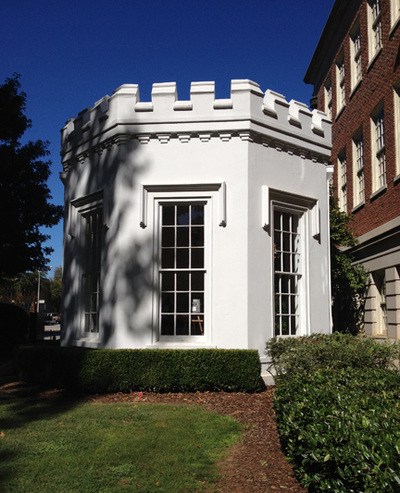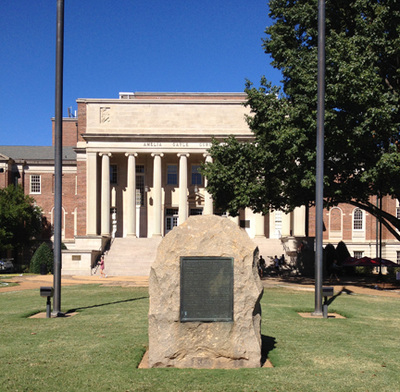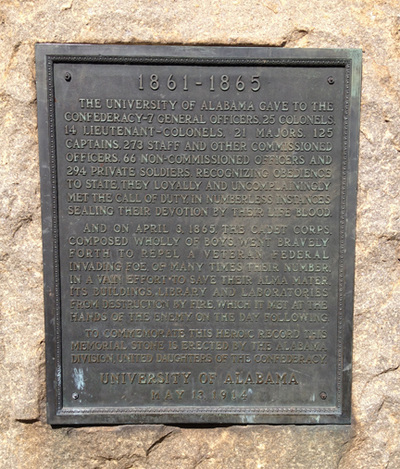 Rebecca Mast (Madison, Alabama)
Rebecca Mast (Madison, Alabama) The memorial stone brings to light an important fact: The University sent hundreds of men to fight for the rebel cause. By the time the Union Army came knocking in 1865, the only group left to defend the campus was the Cadet Corps. According to the Tuscaloosa County Preservation Society (TCPS), the Corps was comprised mostly of fifteen- and sixteen-year-old boys.
Maps from the Alabama Department of Archives and History reveal that Gen. John T. Croxton led Union forces on a long, winding path of destruction across the northern half of Alabama. He had direct orders to destroy the University of Alabama, as the TCPS tells, along with industrial buildings and transportation routes. When they left Birmingham, Croxton’s men were 1,500 strong.
Despite being terrifyingly outnumbered, the Corps marched out to meet the Union forces on April 3, 1865. They fought briefly on University Boulevard, but the Corps was forced to retreat.
Croxton’s forces tore through the city of Tuscaloosa, destroying and looting businesses. The next day, they moved on to the University’s campus and set most of it ablaze. The Guard House, which was, in fact, the only building on University property designed for military use, somehow escaped the Union force’s wrath. It remains on campus today.
Another of the few buildings that survived the attack is the President’s Mansion. It survived, as the University of Alabama’s website tells proudly, because the president’s wife, Mrs. Louisa Frances Garland, refused to let it burn. As Croxton’s men approached, Louisa and many others fled to Bryce Hospital for safety. However, when she heard the news that the Union forces were attacking the campus, Louisa hurried back to protect her home. With a great deal of courage, Louisa stopped the soldiers in their tracks and even made them put out the fires they’d started in the mansion.
I’ve heard a variation of the tale that claims Louisa invited the soldiers inside for lemonade next. Whether that’s true or not, it represents the truly resilient character of the University, the city of Tuscaloosa, and the South as a whole. The University, like the rest of the South, suffered heavy losses and damage during the Civil War, but you would never realize it today. The University’s persistence and determination to survive and recover are truly impressive. These are stories I’ll continue to enjoy no matter how many times I bump into a tour group.
About the Author
Rebecca Mast is a senior at the University of Alabama. She is an English major, minoring in creative writing and French. When she’s not searching through fascinating historical records, she enjoys reading, drawing, and playing clarinet with the Million Dollar Band.
References
Center Jr., Clark E., "The Burning of the University of Alabama," Alabama Heritage, Issue 16, Spring 1990.
Tuscaloosa County Preservation Society
University of Alabama – The President’s Mansion



 RSS Feed
RSS Feed